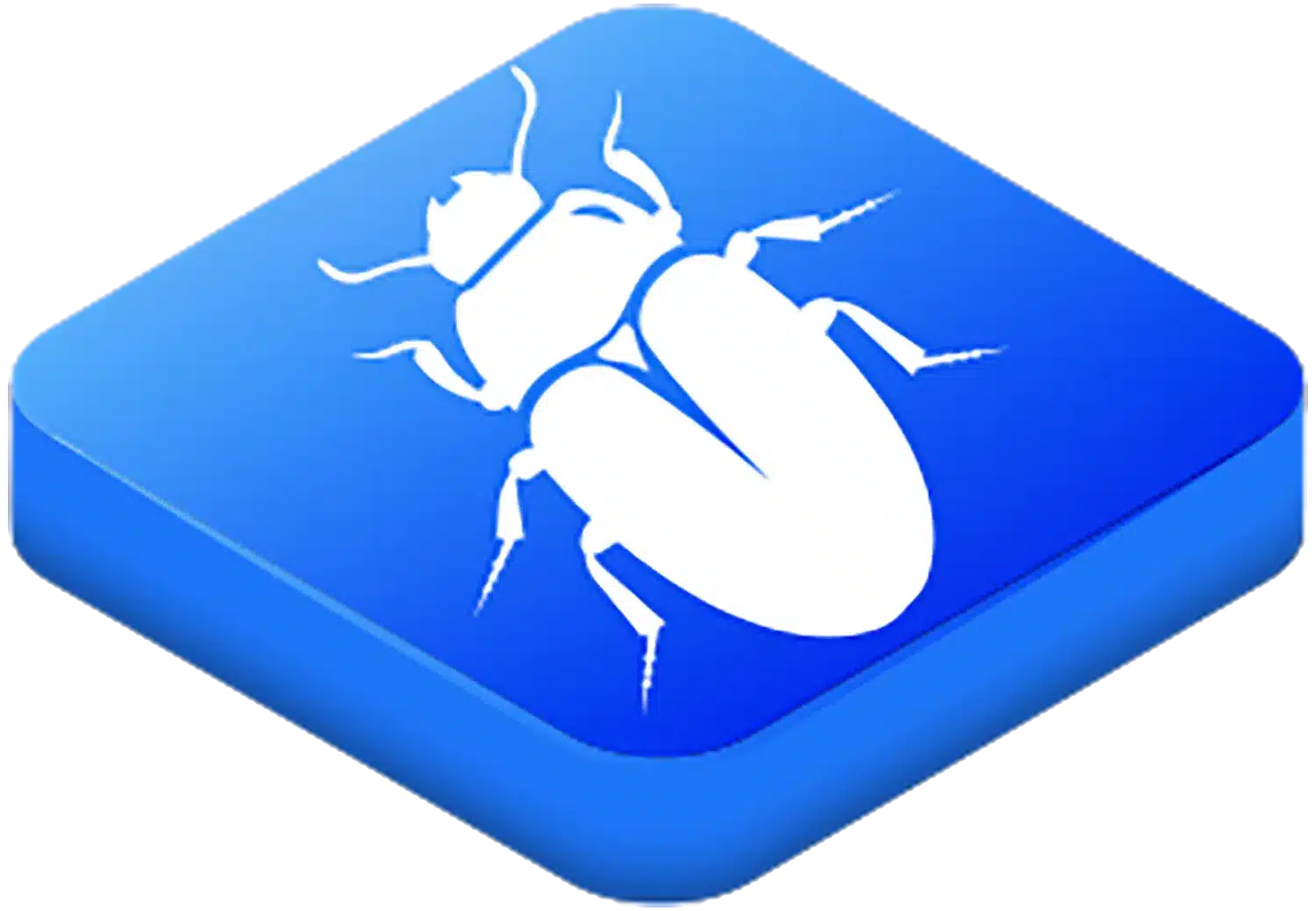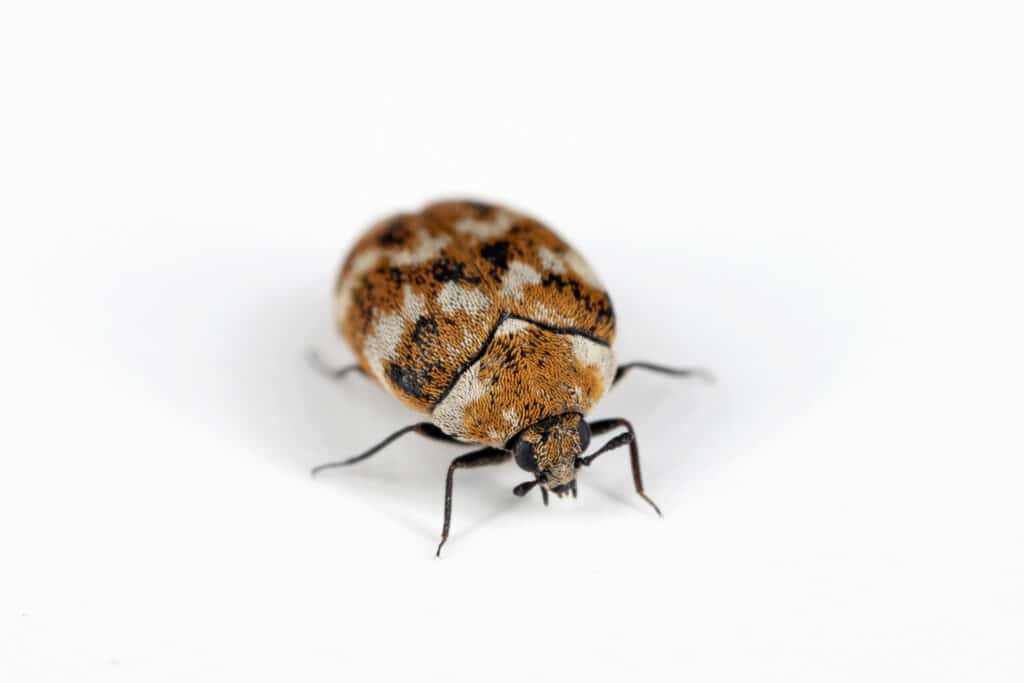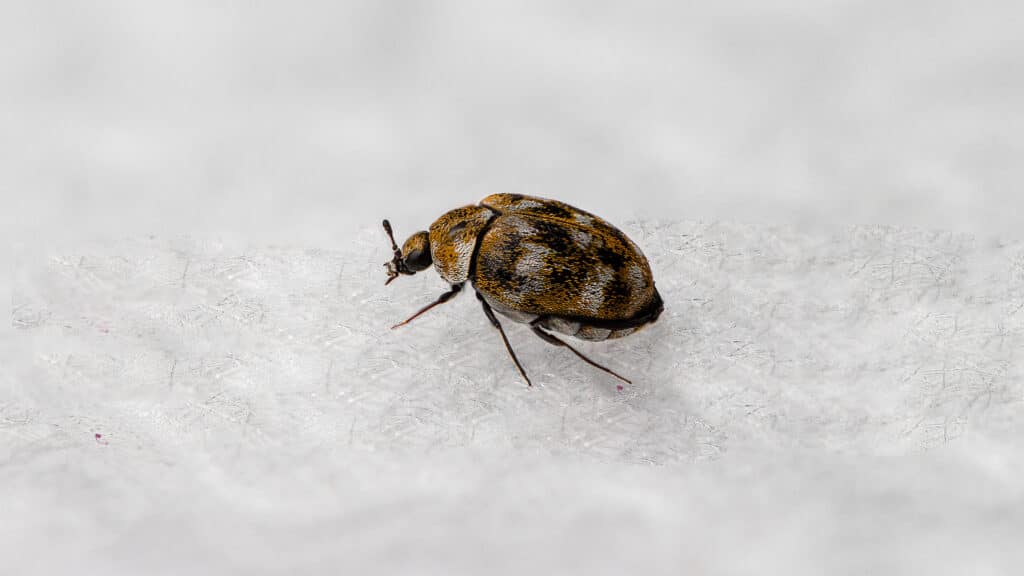
Identifying Carpet Beetles | Pest Guide
Quick Facts About Carpet Beetles
Carpet beetles are tiny pests notorious for damaging natural fiber-based materials in Tennessee homes. Rather than moths, these insects may be responsible for the holes in your clothes, upholstery, carpets, wool, and fur items, causing significant damage to household belongings.- Size: 2-5 mm long (adults), 4-8 mm long (larvae)
- Color: Varies by species – black, brown, orange, or mottled patterns
- Shape: Oval or round beetles with hard wing covers
- Active Season: Year-round in indoor environments
- Lifespan: 1-3 years total from egg to adult
- Reproduction Rate: Females lay 50-100 eggs near food sources

What Do Carpet Beetles Look Like?
Carpet beetles are small, oval-shaped insects with hard wing covers. Unlike many household pests, adult carpet beetles can fly, which helps them invade homes easily. Their larvae are more destructive than adults and have a distinctly different appearance, featuring spiny hairs that often cause them to be mistaken for caterpillars. There are several species commonly found in Tennessee homes, each with unique identifying characteristics.Key Identifying Features
- Adult beetles have hard, oval-shaped bodies with visible antennae
- Unlike bed bugs (which they’re often confused with), carpet beetles can fly
- Larvae have distinctive spiny hairs and cause most of the damage to fabrics
- Shed skins from molting larvae may be found near infested materials
- Small, round holes in natural fibers like wool, silk, fur, and feathers
Related Species
Tennessee homes commonly host several carpet beetle species:
- Varied carpet beetles: 3 mm long with black and orange mottled wing covers
- Black carpet beetles: 3-5 mm long with dark brown to black coloring
- Furniture carpet beetles: 2-5 mm long with white, black, and orange speckled wing covers
While adult carpet beetles are sometimes mistaken for bed bugs, their ability to fly and different body shape can help distinguish them. Carpet beetle larvae (yellow, orange, or brown and 4-8 mm in length) are often confused with clothing moth caterpillars but have distinct spiny hairs rather than the smooth body of moth larvae.

Health & Property Risks
Health Concerns
Carpet beetles can cause health issues beyond property damage.
- Larval hairs may cause skin irritation or allergic dermatitis in sensitive individuals
- Shed skins and fecal pellets can trigger respiratory allergies
- Psychological stress from dealing with persistent infestations
Property Damage
These beetles can cause significant damage to numerous household items.
- Destruction of natural fiber materials including wool, silk, fur, and feathers
- Damage to upholstered furniture, carpets, and clothing items
- Contamination of dry food products that adults may feed on
- Potential damage to museum specimens and valued collections
Where to Look for Carpet Beetles in Your Home
When identifying carpet beetles in your home, thoroughly inspect areas containing natural fibers. Check closets, drawers, and storage areas with wool clothing or blankets. Examine the edges of carpeting, especially in undisturbed areas like under furniture. Inspect upholstered furniture, particularly along seams and underneath cushions. Also check areas where lint, hair, dead insects, and other organic debris accumulate, as these serve as food sources for carpet beetle larvae.When to Call Professional Help
Professional intervention becomes necessary when:- You find multiple adult beetles or larvae throughout your home
- DIY control methods have failed to eliminate the infestation
- Valuable items like heirloom textiles, museum-quality collections, or expensive rugs are at risk
- You cannot locate the source of the infestation despite thorough searching

